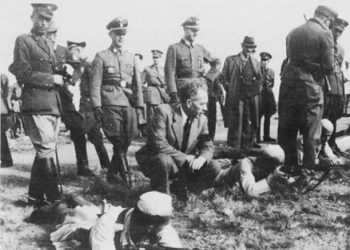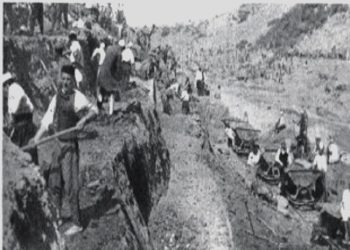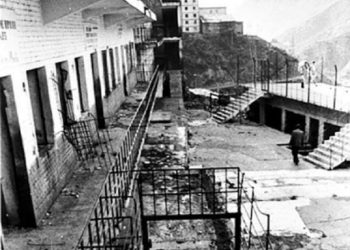By Zylyftar Hoxha
Memorie.al / In the history of our capital, Tirana, the 1930s and 1940s, in terms of construction, constitute its brightest period, since not only did modern Tirana begin there, but also because it truly became a construction site. This construction boom was preceded by Italian entrepreneurs, first, due to the policies, connections and mutual interests of the Albanian state led by King Zog, with the Italian government and later, in the years 1939-43, of the annexationist policies of the Italian fascist state led by Benito Mussolini towards Albania.
Emerging from a medieval feudal backwardness, Tirana, like all of Albania, was eager for prosperity in all directions, especially in the most obvious one, the field of construction. Likewise, the zeal of Italian entrepreneurs and capital, driven by expansion, was irresistible in penetrating the entire life of our country.
The object of this article is not to analyze this issue, but to testify to the extraordinary intellectual, creative and design work of Italian architects, engineers, decorators, painters, sculptors and specialists who worked in Tirana and for Tirana.
The truth is that most of them, such as Gerardio Bosio, Florestano Di Fausto, Giulio Berté, Vittorio Ballio Morpurgo, Antonio Maraini, Pietro Porcinai etc., have been great names of the intellectual, engineering and artistic elite of the time in Italy and beyond, who have left behind immortal works.
We are only taking those that have been built in Albania. Although in different systems and times, Zogist, fascist, communist and recently, democratic; no matter how strangely they changed destinations and functions, such as, for example, from the military headquarters of Fascism, to the University Center; from the center of the Albanian Fascist Youth, to the Rectorate of the University of Tirana; from the Opera Dopolavoro, to the University of Arts; from the Palace of the Central Command, to the Prime Minister’s Office; from “Piazza del Littorio”, to “Mother Teresa” Square; from Hotel “Dajti”, to a bank or something else, let’s see what happens(!), they still remained works of unique monumental value that radiate the West, culture, civilization, Modern Tirana.
Tirana, due to its position, in a beautiful field (don’t see it now in this truly urban mask!), surrounded by hills that at dusk or early in the morning looked like naive drawings of calamari; of the previous medieval orientalist buildings and the beauty of its gardens, it was left to Italian specialists to make those magnificent projects that are still standing and give beauty to the great boulevard of Tirana. With mixed styles, but also introducing national elements, all the projects and constructions of the Regulatory Plan of Tirana of that time were treated and conceived by Bosoio and his predecessor colleagues, but especially by Bosio.
Gerardio Bosio, the building of the central corpus of the University of Tirana, due to its position, stood out from the “Skënderbej” square and the entire length of the boulevard, as an end point and reference, gave it the shape of a northern tower. The same was done for the previous constructions near the “Skënderbej” square, but also for constructions in other cities of Albania such as Shkodër, Milot, Durrës, Elbasan, Korçë, Berat, Vlorë and Saranda.
Less “Italy in Albania”
As part of the “reconstruction” of Skanderbeg Square to make way for the National History Museum and the statue of the communist leader, Enver Hoxha (which did not last long and was demolished on February 20, 1991), in 1980, the old town hall building built in the 1930s, an architectural work similar to the ministries, was demolished. This was the first blow to the Italian project of the center of Tirana.
The next blow was the Olympic Stadium (later the “Qemal Stafa” National Stadium), whose works were inaugurated by the Duce’s son-in-law, Count Ciano, on September 7, 1939 and were completed with voluntary contributions, immediately after the Liberation. The stadium was demolished a few years ago, to make way for another, larger stadium (unfortunately, a project rumored for corruption).
The same fate as the stadium also suffered the building the Circolo Skanderbeg (National Theater), built in 1938 by Giulio Berte, which was demolished and an attempt is being made to build a new theater there with a different project. Even the park behind the Skanderbeg monument, as part of the architectural complex of the square, designed and built by the Italians, is already losing its former form. The “Dajti” Hotel, which after an ugly corrupt affair, denatured and shrunken in the most unfortunate way, is unknown how it will end. So, less and less “Italy is remaining in Albania”.
The hands of famous artists…!
In the Center of Tirana, which includes the Square and the Ministries, it was started earlier. Architects Armando Brasini, Florestano Di Fausto, Giulio Berté, Vittorio Ballio Morpurgo, etc. have left their mark there. Gerardio Bosio, the first, the only and the largest of the constructions of the years 1935 – 1940 in Albania. He was the first, the only and the most important architect, who stayed longer and devoted himself more to the construction projects of modern Tirana. Bosio’s work in Tirana is a heroic act, since modern Tirana begins with his name and, by the number and quality of his works, can be called the “capital of Bosio”.
The central building of the University of Tirana, which marks the end of the “Martyrs of the Nation” Boulevard, the Academy of Arts, the Colonnade with the Archaeological Institute, the “Qemal Stafa” Stadium, the Prime Minister’s Office, the “Dajti” Hotel, the “Brigade Palace” with all its unique park and furniture, as well as the planivolumetric forms of the Palace of Culture, the National Museum, etc., are creative works, cultural monuments and achievements of the distinguished Italian architect, Gherardo Bosio, at the end of the Zogist period and especially during the period of the fascist occupation of Albania.
It can hardly be found in the entire history of world architecture, a more intense activity and greater achievements than those that Gerardo Bosio developed in Albania. Bosio died of cancer, at the age of 38, on April 16, 1941, in his villa of Montefonti in Florence. Although a genius, he is little known by Albanians, since during the communist period he was considered a “fascist architect”, simply because he worked in the unfortunate wrong period. Now it is beginning to be studied, but it should not be forgotten that in just two years, Bosio left behind works that are worth, if not more, at least having a monument or a name on one of his works, in the center of Tirana.
Armando Brasini
Armando Brasini (1879 – 1965) was an Italian architect among the most famous of the 20th century. He was especially dedicated to restoration and decoration, winning the sympathy of Mussolini. In 1929, he was named academician of Italy. He left many beautiful works behind, of course, conceived in the style of his time. Brasiani has a hand in Albania, with the square and the great boulevard in their beginnings. This “King” of architecture of that time, had designed another square and boulevard, with a Mannerist and European Renaissance style, but it was opposed and later strongly corrected by Gerardio Bosio, until it took the form it has.
Florestano Di Fausto
Florestano Di Fausto (1890 – 1965), Italian architect, engineer and politician. He is considered the most important colonial architect of the fascist era in Italy and has been described as; “The Architect of the Mediterranean”, as many of his works are outside Italy, in the Italian Aegean islands, in Libya, Abyssinia, Albania etc. With an extraordinary preparation combined with perfect skill, he is known for his building designs, for different architectural styles, especially between eclecticism and rationalism.
Florestano Di Fausto
In Albania in 1932, he replaced Armando Brasini continuing work with the center of the capital, Tirana and the monumental department buildings around “Skënderbej” Square. At the same time, he designed the Royal Palace of Durrës, the Royal Villa in Shiroka, Shkodër, commissioned by King Zog I.
Giulio Berté
After Brasini and Di Fausto, Giulio Berté is credited with the definitive structure of “Skënderbej” Square, but also with the streets “Zogu i Parë” Boulevard, the beginning of “Rruga e Kavajës” The characteristic Villa Nepravishta; the People’s Theater, (which was demolished) the “Brigade Palace”, as well as other buildings, from 1935 to the 1940s in Tirana.
Vittorio Ballio Morpurgo
Vittorio Ballio Morpurgo (1890 – 1966) Italian architect, prominent representative of Italian rationalist architecture of the 1930s. He also has projects and ideas of his for the buildings of that time in Tirana.
…At the Presidential Palace
The Presidential Palace, known as the “Brigade Palace”, began to be built by King Zog I in 1936. This palace designed by the Italian architect Julio Berté and then profoundly changed in style: from Deco, towards the style of Monumental Rationalism, by the famous Gerardio Bossioi, would serve as the residence of King Zog. Due to the outbreak of World War II and the occupation of Albania by fascist Italy in 1939, King Zog left the country.
The construction of the palace was completed in 1941 by the Italians and was inaugurated during the visit to Albania of King Victor Emmanuel III. The second “imperial” after him was “Meke Partizani”, a character from Dritero Agolli. During the period of Socialism (1945-1991), the building was used for state receptions and ceremonies, functions that it still performs today. Since 1992, the official name of this institution has been the “Presidential Palace”.
Below we bring to the attention of the reader some of the great names who have given their creative contribution to this work of monumental value.
Antonio Maraini & Odhise Paskali
The sculptures of the “Royal Palace” were created by the Italian sculptor Antonio Maraini and the Albanian sculptor, Odhise Paskali. Surprisingly, these two sculptors, in addition to their joint work in this magnificent complex, were also connected by the same history of cultural and professional formation, as both initially studied and graduated in other branches, Marianini in Law, while Odhise Paskali in Literature and Philosophy.
But they soon changed course, dedicating themselves to the figurative arts, especially Sculpture, where they both became famous. While we know our great sculptor, Odhise Paskal, and we are not going to dwell on it, we will give something from the life of Mariani: Antonio Maraini was born in Rome in 1886 and died in Florence in 1963.
Antonio Maraini
Highly appreciated during the fascist period, Antonio Maraini, in addition to his creativity as a sculptor, also served as an organizer of the regime’s cultural policy, in important official commissions and as a deputy. After World War II, Antonio Maraini lived somewhat isolated in Florence, without giving up the direction of the Academy of Painting.
Pietro Porcinai
The greening of the complex was supported by the greening project of Pietro Porcinai (one of the most famous European designers of the post-war period) and the project of the Zgaravatti brothers in 1935, which we will talk about below. Appreciated for his works, studies and publications in the field of natural landscape, he entered the world elite of garden architects and is considered the most prominent in this field in the last century in Italy and in the world.
Pietro Porcinai was born in Florence on 20 December 1910 and died on 9 June 1986. He had a degree in Agronomy and initially worked in Belgium and Germany. He then returned to the Institute of Agriculture in Florence, where he continued his studies until he graduated in 1935, while also working in Pistoia. In 1941 he began the Higher Institute of Architecture in Florence, but left in 1945, without graduating.
Pietro Porcinai
He then began working outside Italy, in the most important gardens of European Architecture, where he was given the opportunity to face new methods and techniques and with some important solutions and concepts of the landscape. He has collaborated with the architects of the most famous green monuments in Europe and in the world. During his professional life, he has created many organizations for the landscape and flowers, has supported with technical assistance many businesses, which are involved in floriculture and landscaping in Italy and beyond.
His design and creative opus, includes a very long list in many countries of the world, over 1,100 works of naturalistic landscape (gardens). Among these vivid works of Pietro Porcinai, is his first work realized in 1935 in Tirana (the Garden of the “Royal Palace”). In addition to a large number of green monuments around the world, Porcinai has also left behind many professional publications, books, practical guides, valuable essays that have found use in park and garden projects today.
Sgaravatti Brothers
“Sgaravatti Brothers”, is the famous Italian garden firm that supported Pietro Porcinai, with plants, shrubs, trees, ideas and projects. Although almost 200 years old, this company, originally established in Padua, continues today with branches throughout Italy. Historically known for its projects and supplies of plants in all the most famous cities and capitals of the world, in Europe, Asia and America. Memorie.al




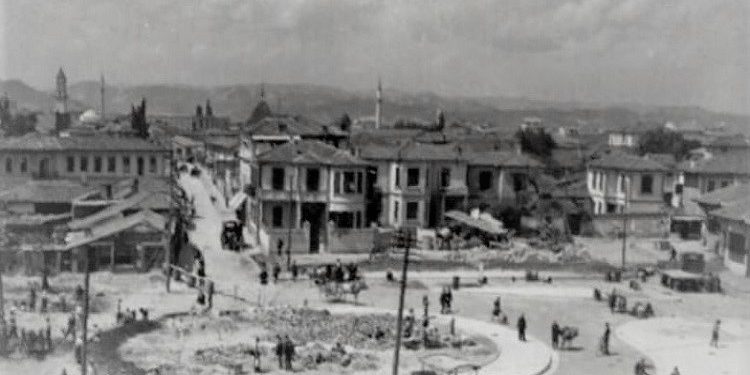

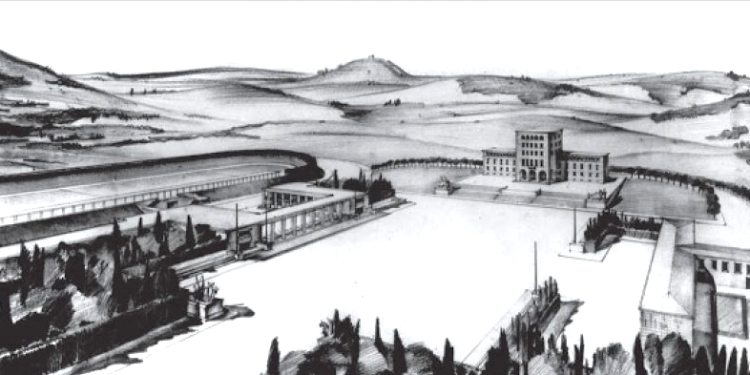
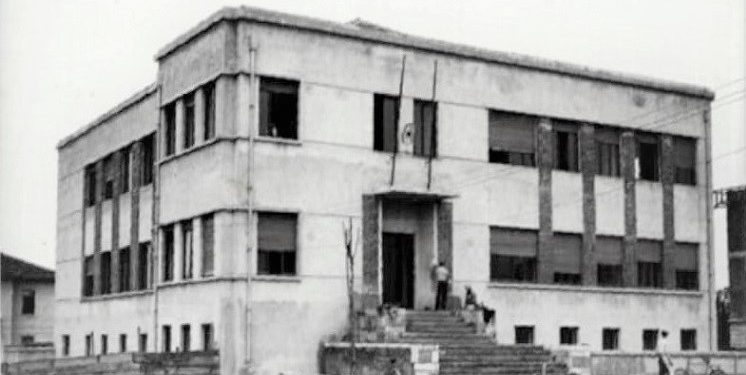
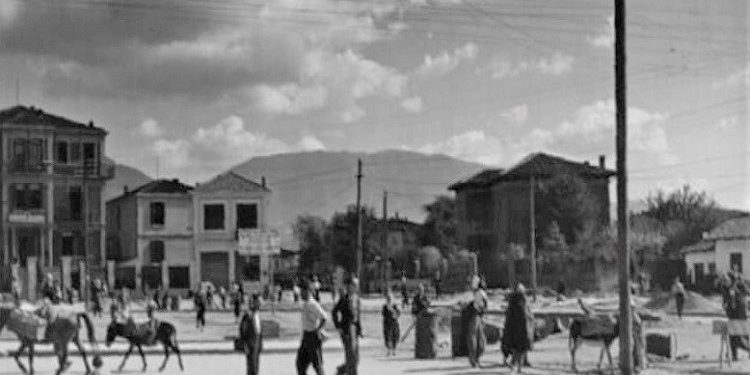
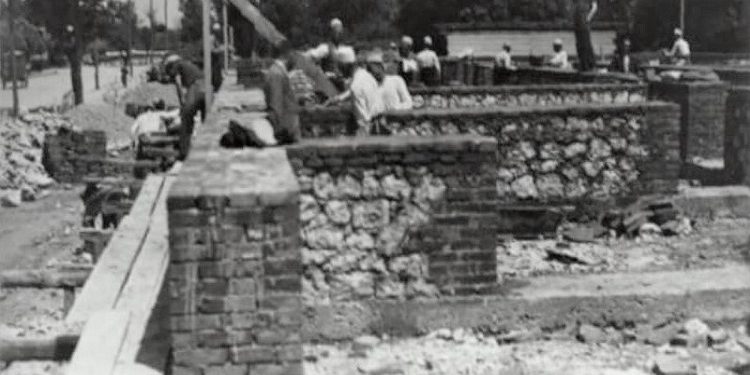

![“His capacity is quite low, he is not clear about the political situation, he only has two grades of school and has never held a book in his hand…”/The State Security document on Sulo Gradeci, Enver [Hoxha]’s escort, is revealed](https://memorie.al/wp-content/uploads/2025/11/Me-Sulo-Gradecin-ne-Dajt-350x250.jpg)

